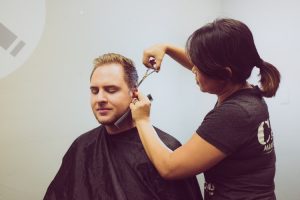Carpentry Apprenticeship
Apprenticeships are a great way to enter the workforce or to pivot your career in a new direction. They provide practical and hands on experience whilst you are studying towards accredited training, certificates and qualifications that are recognized in your chosen industry.
Apprentices are people who learn from other trade and industry professionals in apprenticeship programs, often through a union or trade organization. Many school leavers undertake apprenticeships rather than heading straight into the work force or to university.
Whilst carpentry apprenticeships are very popular, there are many other apprenticeships to choose from also. This article covers in detail how to create a professional resume and a cover letter that will make you stand out from the crowd when you apply for an apprenticeship.
How long do apprenticeships usually take to complete?
Typically an apprenticeship takes between 1 and 4 years to complete. This depends on the level of the specific programme, the apprentice’s ability and the industry sector.
What if I am not sure which apprenticeship is right for me?
With so many different options it can be challenging to work out which apprenticeship is right for you. If you need assistance, work with a specific apprenticeship focused organisation.
They offer aptitude tests, career quiz and questionnaires and advisory services which are a great way of refining your focus. In some instances you might consider a couple of different apprenticeship types (ie perhaps you would consider an electrical and mechanical apprenticeship).
How much do apprentices get paid?
It depends. Whilst you do get paid, the rates are less than those who are qualified.
Will being an apprentice cost me money?
The costs involved vary depending on the occupation, the employer and the country you work in. Apprentices may be required to purchase tools and equipment for some trades.
In some cases, employers may deduct a small amount from an apprentices’ pay check to cover their related instruction costs.
Carpentry and Electrical/Electrician Apprenticeship Resumes
Most apprenticeship programs include a structured application process. That process often requires you to submit a resume. This can be daunting if you haven’t prepared a professional resume in the past.
 Forming your resume for an apprenticeship is not as difficult as you might think. Here is a sample of a resume appropriate for an apprenticeship application. (ADD ONE HERE)
Forming your resume for an apprenticeship is not as difficult as you might think. Here is a sample of a resume appropriate for an apprenticeship application. (ADD ONE HERE)
Within your resume it is always a good idea to include a section of general skills that companies look for in apprenticeship applicants. Here is a list of skills that are typically required for carpentry, electrical and mechanical apprenticeships:
- Excellent communication skills
- Continuous improvement mindset – your desire to learn is really important when you enter any apprenticeship
- Organisational and time management skills – which will allow you to complete jobs in a timely manner
- Self motivation and problem solving skills – following instruction is important but the ability to work independently as well is highly desirable
- Teamwork and collaboration skills – you will work with a range of other people in a workplace context
- Reliability – it might not sound like much, but arriving on time for work and training is VERY important for your reputation to build
Top Tip: Look carefully at the role advertisement or job description to see if any general skills are mentioned. If they are, make sure you list those under your Key Skills and Attributes section in your resume.
If the advert calls for someone who can work as part of a team, include some details of your prior teamwork in other roles you have held. For example under a relevant role in your resume you might include the following under Key Achievements:
“Employed as part of a team of 8 Customer Service Officers, working collaboratively to solve customer issues and problems with a 95% resolution rate”
As you can see in the example above, providing examples of how you use your skills, rather than just listing them as a Key Responsibilities, demonstrates those attributes in action.
If the role calls for high school completion, make sure that you include that in the Qualifications and Education section of your resume.
Carpentry Apprenticeship Applications
A formal carpentry apprenticeship is often measured in hours of service rather than as an elapsed period of time (300 hours rather than say a duration of 2 years). A carpentry apprenticeship involves both work experience and in school training.
To become an apprentice, you first need to find an employer who agrees to provide you with on-the-job training while you continue to work and get paid.
You and your employer enter into an agreement that is registered with a relevant authority (in line with requirements of the country you are working in).
Electrical Apprenticeship
An Apprenticeship to become an Electrician involves hands on experience with master electricians whilst also studying the common theories and practices that apply to being an electrician.
Apprentices learn theory, mathematics, how to read blueprints and schematics, state and local electrical codes, safety and more.
Sometimes companies look for apprentice electricians who have some experience. For example, perhaps you need to show in your resume that you have 6 months of job experience in the electrical industry or have completed some prior qualifications. Make sure you reflect that experience on your resume.
In addition, some roles require you to have a driver’s licence, elevated work platform or construction induction cards etc. It is important to add all relevant technical skills, accreditations and licences to your resume and your cover letter.
Cover Letters for Carpentry and Electrical/Electrician Apprenticeship roles
A cover letter is simply a letter that you include with your resume when you apply for a role. The cover letter introduces yourself and your experience in line with apprenticeship requirements. Your cover letter does not need to be long.
A rule of thumb when it comes to your cover letter is around ½ a page although there is no “rule”. Those assessing apprenticeship applications often spend very little time looking at your cover letter. In fact, many just take one glance. This is why the cover letter format you use is very important.
To stand out from the crowd it makes sense to create a cover letter that addresses the key requirements of the apprenticeship you are applying for. That is, you should create a separate cover letter each time you apply for a role. Otherwise, you end up sending a very generic cover letter just like all the other apprenticeship applicants.
Sometimes the company advertising the apprenticeship will ask you to also include answers to specific questions in your cover letter (or separately).
These are often called Key Selection Criteria (KSC). For example, the company might ask you to respond to the following KSC:
Able to work under pressure in a fast paced environment
Here is a sample response to this Key Selection Criteria statement:
“Having worked as a customer service team member at ABC Supermarkets, I had to juggle work serving customers, with re-stocking shelves and assisting the Store Manager with specific tasks. I used my exceptional time management skills to ensure that I could meet the demands of each of these priorities, whilst ensuring customers had a pleasurable in store experience”
Sometimes the company will place a word limit on your response for each KSC. Make sure you comply with those requests. It demonstrates your ability to follow instructions!
Another technique many people use to respond to KSC is to respond using the STAR method:
Situation: Describe a situation or a task you needed to accomplish
For example, “Whilst working with ABC supermarket, the customer service supervisor asked me to help customers with the self serve checkouts. The store was struggling to get customers to use these registers and when they did, it was a slow and frustrating process for them”.
Task: Define what your goal was
For example, “My aim was to provide clear instructions of the step by step process for customers to process their own purchases, with reduced frustration. My supervisor wanted to see a greater uptake of self service usage by our customers too.”
Action: Describe the actions you took to address the situation
For example, “On my 4 hour shifts, I assisted over 100 customers to process their orders. I worked with customers at a pace I could see would work for them to navigate our self serve registers. I stood next to each customer and clearly guided them, stopping to explain further when I could see they were confused or frustrated”.
Result: Describe the outcome of your actions
For example, “Over a 4 week period the store saw a 50% increase in self service uptake…and much happier customers as I was able to patiently and empathetically walk them through each step to improve their confidence for their next shopping experience”
If the job advertisement or role description talks about specific aspects of the company you will be working with, it is worth addressing those aspects in your cover letter.
For example. Let’s assume the job advertisements says “we are a fun, energetic and family-like company…”. In your cover letter you could say something like:
“I love the sound of working with a fun and energetic team and think that my prior team member means I am able to contribute to fun team collaboration”.
Taking the time to tailor your cover letter will help you stand out from the crowd. It is always a good idea to show a little of your personality if you can. Using the approach outlined here will set you apart from other apprenticeship applications.
Hairdresser Apprenticeship
Before entering the beauty world as a licensed hairdresser, it is a good idea to serve an apprenticeship. This creates a useful opportunity to understand what daily life is like when you are cutting, coloring and styling hair in a salon.
As a hairdressing apprentice, you often work as a salon junior, assisting senior staff while training as a junior stylist.
Your main duties are likely to include booking appointments, shampooing, conditioning, drying and styling clients’ hair. Learning how to mix and apply hair dyes, tints and colourants might also form part of your workload.
The apprentice term varies depending on the country you work in. Typically is runs for three to four years after which you will be a fully qualified hairdresser.
Specific duties will vary from salon to salon, a list of general duties are listed below:
- Taking bookings, diary management and processing payments
- Offering advice on styling, coloring and maintenance
- Shampooing, conditioning and treatments
- Permanently straightening or waving hair
- Styling your clients hair with scissors, razors or clippers
- Braiding, adding hair extensions, weaves and dreadlocks
- Cut or style weaves or hair pieces
- Shaving or trimming beards and/or moustaches
- Keeping your utensils as well as your work station and the salong clean and sanitary
Cover Letters for Hairdresser Apprenticeships
When you see roles being advertised for Hairdresser Apprenticeships, the company often asks you to send a cover letter and a resume to them as part of your application.
To stand out from the crowd it makes sense to create a cover letter that addresses the key requirements of the apprenticeship. That is, to create a separate cover letter for each role you apply for. Otherwise, you end up sending a very generic cover letter just like all the other apprenticeship applicants.
For example, if the job advertisements calls for exceptional communication skills, you could write something like:
“I have exceptional communication skills developed working with customers in my casual role with McDonalds”
It is also useful to include some content in your cover letter that shows you have a general understanding of the hairdressing industry. Have a think about what would make you successful as a hairdresser.
For example, knowing how to b, and keep clients is key to a successful hairdressing career. You could demonstrate your understanding of this fact. For example, in your cover letter, you might write something like:
“In the hairdressing industry, I understand that it is important to establish relationships with clients and to create an excellent in-salon experience. I am keen to develop my client service skills and this apprenticeship would allow to strengthen my skills in this area”.
Resumes for Hairdresser Apprenticeships
If you are a school leaver with no professional experience, creating a resume for the first time can be very daunting. With a little focus, you can complete a resume in no time. The key is to get a little creative.
If you have had a casual job whilst at school it makes sense to list it.
If you have no formal work experience but you have volunteered at school musicals or babysat in your neighbourhood, you have relevant content you can add to your resume.
Let’s take a quick look at the key traits, skills and qualities that are likely to be sought for a Hairdresser Apprenticeship:
- Creativity
- Effective teamwork
- Maintaining a tactful, friendly manner
- Excellent presentation and communication skills
- Openness to learning new ideas and techniques
- Attention to detail
- Active listening skills – being able to listen carefully to your clients
- Manual dexterity
- Adaptability
So, let’s say you have no formal work experience, but you have done some babysitting whilst you have been at school. In your resume you might say:
Babysitter and Child Minding | January 2018 – December 2018
Key Accountabilities:
- Regular experience babysitting for neighbors and family friends which has taught me to be punctual, polite and to follow specific instructions
- Rapport building and supervision of children from the ages of 2 to 12 years
If you have had a casual role whilst you have been at school, consider listing some of your Key Achievements under each role (rather than a list of Key Responsibilities) that demonstrate your skills in action.
Let’s say you have had a job at a local supermarket. Instead of listing “Customer service” as a Key Responsibility, consider adding a Key Achievements section under that role.
This allows you to provide more specific details about your experience. For example, under Key Achievements you might write:
Customer Service Team Member | ABC Supermarkets | Jan 2018 – Dec 2018
Key Achievements:
“Regularly referred to for resolution of customer issues and concerns, demonstrating excellent problem solving skills. I received a number of monthly team awards for my proactivity and critical thinking skills”
Mature Age Apprentice Applicants
Many people change career paths at some stage in their working lives. The term mature age simply means someone who has not gone straight from school into an apprenticeship program. The actual age that defines you of “mature age”, varies from country to country.
If you have prior work experience when you apply for an apprenticeship, you are likely to have many skills, attributes and core competencies and commercial experience that will stand in you good stead.
Presenting your prior experience in your apprenticeship cover letter and resume
It is very important to list all of your transferable skills on your resume and in your cover letter. You should take the time to reflect this experience as it means you will be able to add extra value to your employer in an Apprenticeship position.
In the instance that you are changing professions, make sure you reflect the motivators for doing so in your cover letter. For example you might write:
With significant experience in a retail sales role, I am now keen to further develop my skill set and diversify my work experience. It has been rewarding working as a sales specialist, but I am energised and committed to making a change in my career direction”.
Electrician Apprenticeship
Before you submit your resume and cover letter for an apprenticeship position you should do the following things:
Check 1. Double check the spelling and grammar throughout your resume and cover letter
Check 2. Check your resume for consistency of formatting
Check 3. Is your language appropriate? Is it too formal or too casual?
Check 4. Get someone else to check your resume and cover letter. They might notice that you have other skills, experience and attributes that you should reflect on your resume or cover letter
Check 5. Make sure that you have listed the current contact details. Listing your mobile phone number incorrectly means you certainly won’t hear back about your application
Check 6. If your apprenticeship needs to be addressed to someone specifically, make sure you have spelt their name correctly. Spelling names incorrectly never creates a good first impression.
Providing Referee Details for Apprenticeship Applications
Referees are people who can attest to your skills, experience and personality. Think carefully about who you provide as your referees.
Ideally list your Manager or Supervisor in prior roles you have held. If you do not have any formal work experience, you might list those you have babysat for or a key teacher who can attest to your personality and attitude.
If the application does not call for Referees you can just list “Referees available on request”. You can then nominate contacts if you get shortlisted for the apprenticeship.
ALWAYS speak with your referees before you list them or provide their details to potential employees. This means that your referees will not get caught off guard if someone calls them. It also allows you to make sure that they are happy to be a referee for you!
Other important Apprenticeship Application reminders
Once you have submitted your resume it is a really good idea to follow up your application…politely. If the application process outlines that the company considering applications will call you on a specific date, wait until that date has passed.
If you still have not heard something by that date, consider giving them a call. A polite request for an update of how the apprenticeship application is progressing shows the company that you are keen and very interested to hear how things are progressing with your application.
Here is an example of an email you might send to follow up on your Apprenticeship application:
“Dear (Company name)
I recently applied for the XYZ Apprenticeship role. This apprenticeship is of great interest to me and I was wondering how my application is progressing. Any feedback you are able to provide to me would be greatly appreciated.
I look forward to hearing from you.”
Apprenticeship Application Assistance
If undertaking an Apprenticeship Application is too daunting to handle on your own, make contact with a company who can assist you by walking you through each stage of the process.
Alternatively make use of online resources and digital forums such as Quora and Whirlpool. Of course, given the apprenticeship application process varies between industries and countries, try to source a country based forum that discusses your specific industry.
Have you got any questions about applying for apprenticeships? Finding it difficult to put together your resume or cover letter? I can help. Get in touch.




